Best Raid Data Recovery Software
Introduction: in this article we will explore the principles of data recovery from RAID massifs in so-called “simple” cases using methods which are accessible to everyone and do not require profound knowledge in the domains of hardware and software. Cases that can be referred to as “difficult” are too different from each other and require individual approach; therefore there is no sense to describe them within one single article. However, we can discuss an exception case in the forum thread devoted to this very purpose.
Attention! If lost data is crucially important but you are not a specialist in data recovery, we strongly recommend you resort to a company whose primary activity is this very kind of problem.
But if your data’s fate is less interesting to you than your desire to try to recover it yourself, this article is for you.
A short digression:
When exploring massifs, we cannot avoid mentioning RAID controllers which there are plenty of today, with price range varying from twenty to several thousand dollars. The comparison of reliability is a tough issue, but everyone can understand that the difference in price is not fabricated.
Low-budget controllers have simplified operating and recovery procedures after errors that reflect in a higher probability of data loss. More expensive models are more reliable, error processing algorithms are more advanced, but they are not flawless as well.
Here you can ask questions relating to the features of operation of certain models of RAID controllers.
RAID massif is not a panacea for data loss. One can tell from experience that there are controller errors as well as hard drives failures, or there is a snowball effect and one failure leads to another one. Anyway, you risk your “reliably stored” data by fully relying on massifs’ reliability and not caring for timely backup.
Data loss probability can be lowered significantly by regular tracking of massif status and carrying out routine maintenance, but you cannot reduce it to zero this way.
Reasons for RAID massifs’ failures:
The most common case of disk massifs’ breakdowns is negligence of system administrators reckoning upon that “you cannot step in the same river twice”. For instance, during the operation of RAID 5, one of disks breaks down. Massif continues to operate but with a noticeable speed decrease. System administrator, having noticed the breakdown in the drive operation, does not hurry up to take actions since he hopes the massif can operate for some more time in this state. Sometimes it turns out to be a delusion.
If one of your disks breaks down, you better backup all crucial data immediately and then, having replaced on of the drives, rebuild your massif.
Why did we have to mark that it is essential to backup data preliminary? Because when a massif is being rebuilt, it sometimes happens that the process gets hung up. It normally happens when during disk writes/reads there discloses a bad block in one of the disks, and a controller cannot read information from a sector. As a result, after long wait and inactivity, a server becomes overloaded. Then it turns out that massif broke down completely. In these cases deadlocks happen due to incorrect processing of an exception case. Normally, the described case is more typical for cheap controller models, but you also can come across this when using expensive software.
Another widespread reason for massif denials is simultaneous switch of several disks to offline mode. As experience shows, it most frequently happens due to SMART issues or bad blocks. A disk works correctly until the number of bad blocks exceeds a certain value, but eventually massif stops launching. It may seem fine, but one cannot tell why a disk is offline, a massif does not run and does not transmit data. It all is due to that a controller cannot read out necessary data from a disk or defines a disk as “dead” by diagnosing SMART.
We can introduce a number of examples of massif breakdowns, but what one can do if this happened? Data is lost and you need to recover it.
Theory: RAID levels and principles of data recovery:
Massifs of levels 0, 1, 10, 5, 50 are being used more frequently. Lately there has been a growing interest in level 6.
Below there is brief information on principles of massif operation. You can read more in the corresponding article.
RAID 0 is using rotational records (stripe). It is built of two or more drives. Information is being recorded to all massif disks by blocks of a certain (8 kb, 16 kb, 32 kb, 64 kb, 128 kb, etc.) size. Files whose size is one block are spread evenly to two or more disks.
Due to the absence of data duplexing or redundancy, it is impossible to recover data completely without using data from broken drive in case when of the disks breaks down. Files whose size is less than that of the block are an exception. For complete data recovery in such cases one needs to extract data from the broken disk first, and then to recover RAID.
In cases when all disks operate fine but the massif refuses to operate correctly, data recovery is carried out by methods described below.
RAID 1 is using the mirroring technology. It is being built of two disks. Information is simultaneously recorded on both drives; each disk is a complete copy of its fellow. In case of a breakdown of one of the disks the massif continues to operate.
If there occurs a failure in controller operation and massif cannot be identified, then data recovery can be carried out with the use of advice from the article “Simple data recovery”. For that purpose one of the disks should be connected directly to a computer avoiding RAID controller. If everything is fine, after the connection your data can be accessed without programs mentioned in the article above.
RAID 10 is combining levels 0 and 1, i.e. two stripes are combined in a mirror. Minimum 4 disks are used in the massif. It can stay functional even when one of the RAID 0 components breaks down.
If a problem occurs, you first need to identify what component failed – controller or disks.
When the problem is with controller you need to define which Winchesters are pairs making stripes. Here it is essential not to confuse disks since it can lead to the loss of time and no result at all. After this is identified, you take one pair and you extract the information from it the same way as from RAID 0 itself.
When exploiting RAID 10 it sometimes happens that both disks break down. The following options are possible in this case:
- Both disks belong to one stripe, a controller processes an exception case correctly, and a massif continues to operate fine.
- Both disks belong to one stripe, but a massif breaks down. In that case we take a working stripe and collect it programmatically (see below).
- Disks belong to different stripes, but one of them has the first drive operating fine, and the other one has the second drive. Try to piece RAID 0 of them.
- Homonymous disks of different stripes broke down. Alas one of the broken disks is to be fixed or the data should be extracted any other way. Then comes programmatic collection.
RAID 5 is a massif with parity control. Its major benefit is distribution of information blocks and control parity blocks to all disks of a massif. You need minimum 3 disks to create such massif. The massif volume equals the sum of volumes of drive components minus one disk. Blocks of parity control are used to calculate the missing information when one of the drives in a massif breaks down. Thus, with the breakdown of one disk data is not lost and a massif can carry on operating.
But it sometimes happens that after one drive broke down the controller incorrectly processes an exception case and massif stops working correctly or completely falls down. Such a failure can occur even during the rebuild of a massif after the disk replacement. Sometimes in a short while after the “death” of the first disk the other one breaks down too.
If a massif is not working, and the number of broken disks does not exceed one, it can be collected programmatically similar to how RAID 0 is being collected. When two drives break down you first need to recover working capacity or extract the information on the working disk, and only after that you can start massif collection.
Practice: it does not pay to do this:
Let us mention what you should not do so that you do not lose your data.
Beforehand, do not create the new massif from old disks in hopes that it will launch and everything will work as fine as before. This can work but there is a high probability that the controller will do certain things which may lead to an inevitable data loss.
Launch of initialization does not lead to anything good, too, so that you better not use it, and if it is impossible, use quick init. only.
How else you can cause damage to a massif? By launching a check disk or something like that. In general one needs to remember that in case of data loss on RAID you need to stop any data recording on disks. If you do not know for sure whether or not certain actions will lead to data loss, then consult a person that knows it or just do not make those actions.
RAID recovery methods.
Software recovery of RAID on the example of massifs of levels 0 and 5:
Main method data recovery from RAID is the program construction of the massif image. That is, with the help of programming means blocks from different disks are built in the necessary sequence. The disposition of blocks in the massif depends on the location of disks on channels and on the operating procedure of the controller itself.
Before you proceed to business, you need to create clones of all disks to make yourself safe from incorrect actions. Copies can be done in the form of files as well as on other drives.
It is you who decides whether you work with copies or original versions. I strongly recommend using copies, because if the initial drives have unreadable or unstable sectors, working with such disks can worsen their state or lead to a complete denial.
So, let us start.
To construct a massif you need to know its original parameters. They are the size of a block and the sequence of disks.
If you know them, you can be sure that half of work is done, and you have saved lots of time for other, more pleasant things. If not so, you will have to collect them from somewhere.
Fortunately, there are automatic ways of configuration search and RAID recovery, such as RAID reconstructor. If you input the massif level in, it will try to find the original sequence of disks, the block size, and to suggest the algorithm of data recording on disks.
Further let us describe the step-by-step actions with the use of this utility.
We can see the window of the started program in front of us.
The first step necessary for the beginning of work is the choice of the massif type. It is carried out in the drop-down list «RAID TYPE».
Having specified the massif type for construction, you need to mention the number of disks in the «#drives» window. After you have done it, several fields below will be highlighted with white (the number of them is equal to the number of disks you mentioned). Then we hover on each of the highlighted windows, click the right mouse button and choose disks where there was the massif. After the disks have been chosen we go to the «Block size» step.
Here you need to mention the block size, if you know it, if not so, leave this field unchanged and press the «Open drives» button and then on the «Analyze» button immediately.
You will see the new window in front of you. This one in case of working with RAID 0:
Or this one in case of RAID 5:
So, we have a window in front of us where we will input the parameters of search for the disk sequence, the block size, and, if we construct RAID, parity rotations.
If, as was mentioned above, you now the controller your massif was based on, what algorithm of data recording was used, and the block size, then we exclude the unnecessary parameters in the «Block size» and «Parity rotations» windows. If the parameters are unknown, we leave everything unchanged. Press the «Next» button.
The calculation of all possible combination has begun. Upon completion, the utility will select the most appropriate option for you by outputting something like «Recommendation: choose entry 1» in the lower part of the screen. If this happened, you can catch a break. The correct algorithm has been found.
If not so, it means that the massif has been damaged substantially; you need to increase the number of sectors for selection in the corresponding field and repeat the analysis. If this did not help, only a specialist can help you.
But, let us continue. The algorithm has been found. Further on there are several options. You can rewrite the massif image to a file or record it on a disk or a massif, or create a file of virtual image and continue the analysis in Captain Nemo, Get Data Back or DiscEditor. You can choose anything you want.
Another option is that, knowing the disk location, the record algorithm and the block size, you can recover RAID by using UFS Explorer. You can find the instruction for use in the user’s manual.
When the massif is constructed correctly, and file systems do not have logic damages, you can access the data by standard means. Particularly, if the image is copied to a hard drive, you can connect it to a computer and restart the operating system (if the hot insertion is not supported).
Let me remind you that you only can recover RAID in the simplest cases using the abovementioned methods. The description of difficult cases goes beyond this article and implies specific knowledge.
For instance, you can fail the recovery of RAID in the described way in case when the controller records configuration information at the beginning of the disk. Not having mentioned the number of sectors taken by the service data to a program one can receive the incorrect result of the automatic selection of the massif configuration. These configuration blocks are individual for every controller model, and you only can find out their size by researching the content of initial sectors.
Hardware RAID recovery:
Hardware construction can be an alternative to the creation of the massif image. Let us state beforehand – without know the controller’s operating algorithm or without the backup copy of all disks of the massif you must not use this “voodoo method” since you can make such changes that will deprive you of all data even if you go to a specialist.
The information stated here is given for illustrative purposes, not as the instruction manual.
The essence of the method is that the massif is created once again on the controller with the configuration completely alike the previous one.
Nota Bene. If you start a rebuild during construction, there is a high probability of irretrievable data loss.
Some controller models start initialization automatically after the construction of the new massif, which can also lead to data loss.
If all disks of the massif were non-faulty, there is a probability that you will access the data without additional efforts. Also it is not improbable that the file system will be partially damaged and you will need to work with such utilities as R-Studio, Get Data Back or something alike.
In case of the massifs of level 5, when of the disks is faulty, you can create the massif with the disk change to a similar one which is not faulty. When the massif is constructed (do not start rebuild!), after the launch of the operating system, this disk will need to be switched off “hot-headed”.
As a result, there is a probability that you can access your data immediately or by using programs for logic data recovery.
Conclusion:
In conclusion, let us state once again – if the data is crucial, put experiments aside for some time and call specialists. We are advising you to do so because we know the negative experience of many people.
Best Raid Data Recovery Software:
MAGICUNERASER
Repair corrupted RAID 0, RAID 1, RAID 4, RAID 5, RAID 6 and many other types of arrays by connecting the disks to your computer.
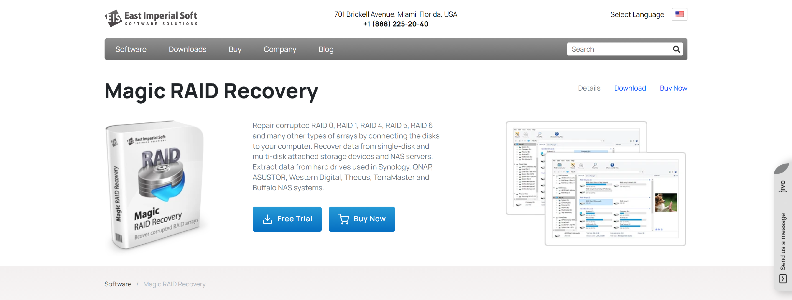
MAGICUNERASER
FREERAIDRECOVERY
RAID Recovery Software – the only FREE tool. Need to recover a failed RAID? Do not rush to send it to a lab, try our read-only free RAID recovery software which recovers most common RAID types.
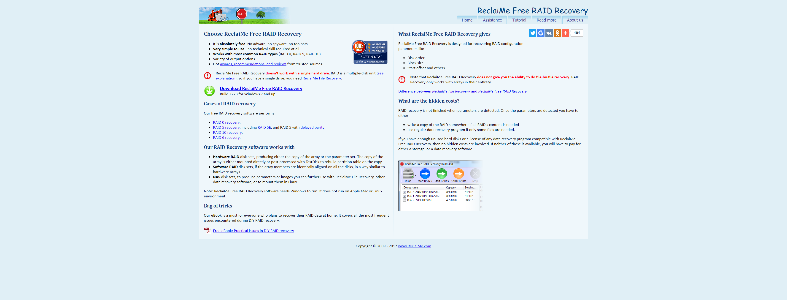
FREERAIDRECOVERY
RUNTIME
Data Recovery – Data Recovery Software – RAID Recovery – NAS Data Recovery. Data Recovery Software for all Windows File Systems, Recover Deleted Files, Hard Drive Data Recovery, RAID Data Recovery, NAS Recovery, Free Download.

RUNTIME
DISKINTERNALS
NTFS Recovery, Recover deleted file, undelete files with DiskInternals. Did you delete a document, mp3 file or picture? Easy NTFS Recovery. Recover deleted file with DiskInternals Uneraser. Try free!

DISKINTERNALS
STELLARINFO
Data Recovery Software Free Download – Stellar Data Recovery. Best Data Recovery Software & tools free download to recover lost, deleted, formatted data from desktop, laptop, mobile, or server. Stellar Phoenix data recovery software provides free preview of recoverable data.

STELLARINFO
RECLAIME
ReclaiMe File Recovery Software. Need a smart multipurpose data recovery software? Click here to try ReclaiMe File Recovery software for free and preview your data immediately.

RECLAIME
UFSEXPLORER
UFS Explorer: Cross-Platform Data Recovery and Data Access Software.

UFSEXPLORER
SEAGATE
Seagate Recovery Services’ RAID Data Recovery and in-lab critical response services provide state-of-the-art data recovery services for all Redundant Array of Independent Drive (RAID) configurations, for all brands, media formats and/or Operating Systems.
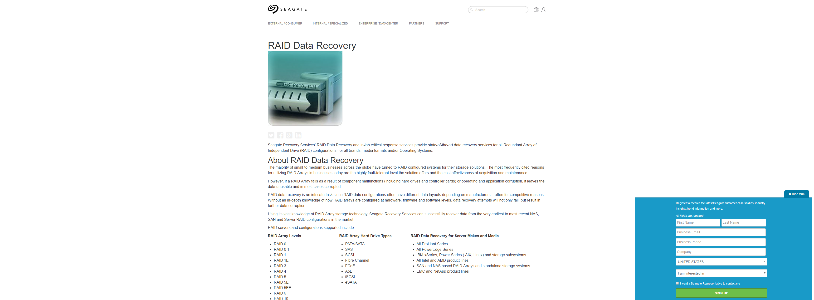
SEAGATE
KROLLONTRACK
Data recovery & ediscovery by Kroll Ontrack UK. Kroll Ontrack is the world leader in data recovery and accessibility, secure erasure, ediscovery & computer forensics solutions and services since 1987.

KROLLONTRACK
BINARYBIZ
Data Recovery | Instantly Recover Lost Files. Free data recovery software to quickly recover data you thought was lost forever, guaranteed & risk free!
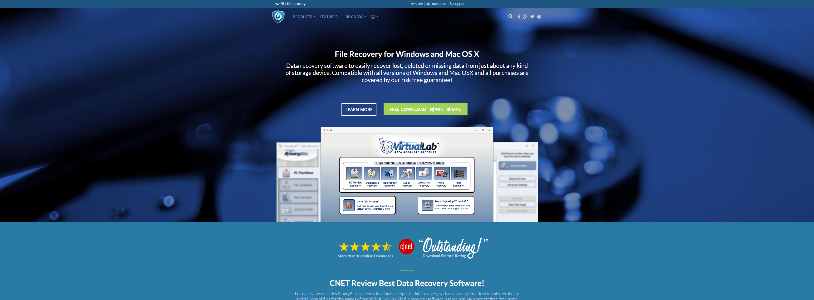
BINARYBIZ
Z-A-RECOVERY
Data Recovery Software, Solutions, Tutorials – ZAR Data Recovery. Learn how to do data recovery yourself. Data recovery software, data recovery tools and data recovery tutorials by well-known and time-tested ZAR Data Recovery.

Z-A-RECOVERY
DRIVESAVERSDATARECOVERY
Data Recovery by DriveSavers | All Drives, RAID, SSD & iPhones. More than 30 years experience in fast & certified secure data recovery for hard drives, RAID, SSDs, smartphones and digital camera media.
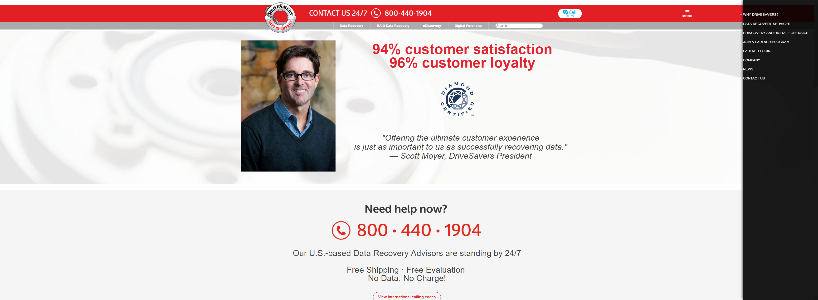
DRIVESAVERSDATARECOVERY
SALVAGEDATA
SALVAGEDATA® Recovery Inc. Data Recovery Services. Hard Drive Recovery & RAID Data recovery Services by leading experts SALVAGEDATA, Hard Drives, SSDs, RAID arrays call 800-972-3282 for No Fee guarantee.
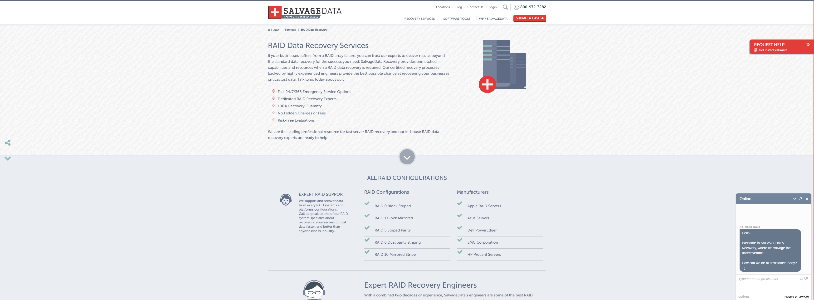
SALVAGEDATA
DIYDATARECOVERY
RAID Recovery – NAS Data Recovery – DIY Data Recovery Software. Do It Yourself Data Recovery Software for all Common File Systems, Recover Deleted Files, Hard Drive Data Recovery, RAID Data Recovery, NAS Recovery, Free Download.

DIYDATARECOVERY
DISKGETOR
Best Hard Drive Data Recovery Software windows 8, 10. What is the best Hard drive Data Recovery software for windows 8, 10 XP, DiskGetor Data Recovery recover formatted data,deleted data,lost data,damaged data from hard drive,supply Best disk recovery software and Data rescue tool.

DISKGETOR
DTIDATARECOVERY
DTI Data Recovery – Hard Drive Data Recovery Company – RAID Recovery. DTI Data understands the importance of your data, we have over fifty years of experience as a data recovery company with failed hard drives, RAIDS, and more.

DTIDATARECOVERY
Personal contact info – slikgepotenuz@gmail.com
Permanent Address :- Montville, NJ
CEO and co-founder at Cloudsmallbusinessservice.com